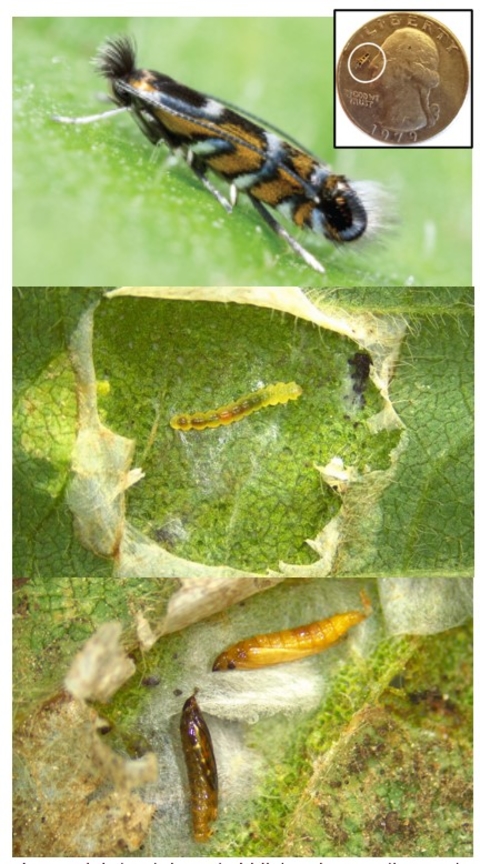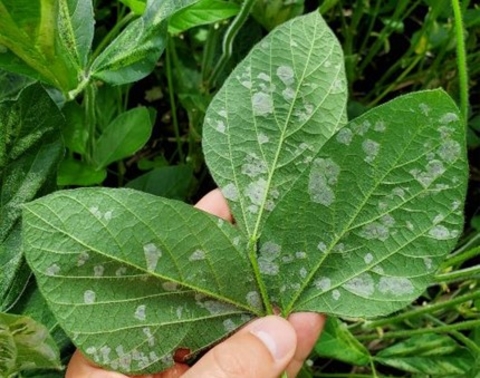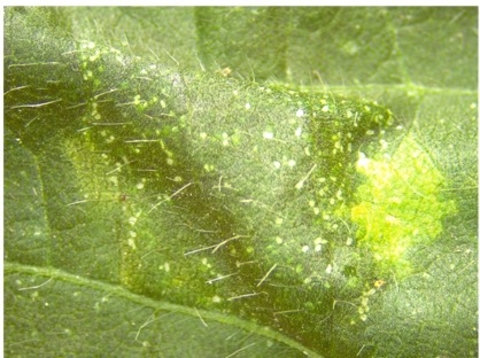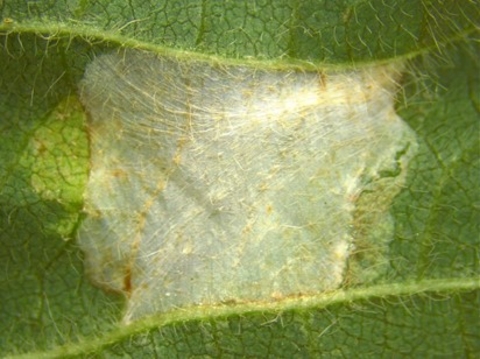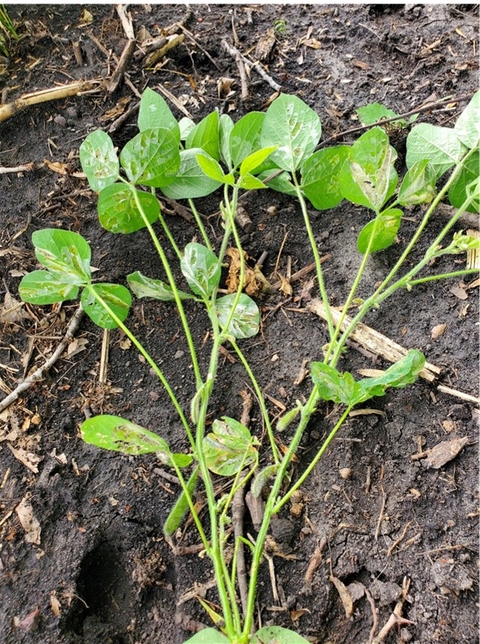Identification of soybean tentiform leafminer (Macrosaccus morrisella)
Adults (Figure 1)
- Small moths, about 6-7 mm long
- Wings with orange, white and gray-black marks
Larvae (Figure 1)
- Small larvae reaching 4.7 mm long
- White-colored when young and turn pale-green in color when more mature
Pupae (Figure 1)
- Small pupae reaching 3.6 mm long
Natural history
Soybean tentiform leafminer is a native species widely distributed across eastern North America and Canada.
This insect is known to feed on two native plants, American hogpeanut and slickseed fuzzybean, of the Fabaceae family - the same family as soybean. This suggests that the soybean tentiform leafminer has adapted to feed on soybean.
Adults lay eggs on the underside of soybean leaves. Much of the behavior and biology of this insect is still largely unknown.
Impacts
Larvae feed inside the leaves and form mines that do not cross the midribs or main lateral veins of the leaves (Figure 2).
Mined tissue eventually dies, so injury from soybean tentiform leafminer reduces leaf area, like defoliation.
On the underside of the leaves, mines start small and linear, but enlarge to elongate-oval, whitish blotches (Figure 3a).
These mines eventually become tentiform - slightly raised or tented - and can be seen on the upper side of the leaves, often with numerous small light-colored spots (Figures 3b).
Scouting and management
Preliminary observations suggest that infestations are heaviest on field edges near wooded areas (Figure 4).
Management decisions for defoliators in soybean are based on estimates of defoliation from the entire canopy (top, middle and bottom levels).
Current defoliation thresholds for soybean:
- 30% - vegetative states
- 20% - reproductive stages
Application of foliar insecticides could be an option in the future, but insecticide efficacy and application timing need to be studied for this pest.
Reviewed in 2023


